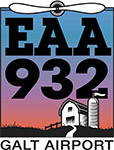The answer to this question is yes and no, because there are different kinds of monitoring of this international distress frequency.
In the U.S., air traffic control towers, FSS services, national air traffic control centers and other flight and emergency services continuously monitor the 121.5 MHz frequency. Many commercial aircraft also monitor this frequency which is also known as “Guard.” This frequency is still used by pilots in distress for radio communications during emergencies.
The 121.5 MHz frequency is also used by many emergency locator transmitters (ELT’s) which are battery-powered devices that transmit an audio alert to locate aircraft involved in accidents. This equipment is required in most U.S. general aviation aircraft.
The National Oceanic Atmospheric Administration (NOAA) operates the COSPAS-SARSAT satellite destress alerting system that detects activated distress alerting devices. However, due to the high number of false signals on 121.5 MHz they discontinued their satellite monitoring of this frequency in 2009.
Existing 121.5 ELTs still meet the FAA regulatory requirements but newer ELTs transmit on 406 MHz and are much more reliable with fewer false-alarms. COSPAS-SARSAT satellite monitoring now only monitors the 406 MHz frequency. Once activated COSPAS-SARSAT provides the owner’s information and position to the appropriate U.S. Air Force Rescue Coordination Center or U.S. Coastguard Rescue Coordination Center. Because 406 MHz ELTs must be registered with NOAA, the first thing they will do is to contact the owner to verify if the signal is a false alarm.
Due to the poor performance of the older 121.5 MHz ELTs, I recently decided to replace the one in my Mooney with a new ACK E-04 406 MHz ELT. (This is a lightweight replacement for the E-01 model ELTs). This model accepts GPS position input data from a panel mounted or a handheld GPS device and the position data is updated once per second. It uses a lithium battery with a 5 year battery life and will transmit on 406 MHz for 24 hours and on 121.5 MHz for 48 hours.
406 MHz signals are detected almost instantaneously and when connected to a GPS their exact location will be downloaded to search and rescue (SAR) organizations within ten minutes of activation with a position accuracy of several hundred feet. Without the GPS input location can take up to three hours and is only accurate to a 1 to 5 km radius.
I hope I never have occasion to use it, but in the eventuality that I experience an emergency and need to be located I feel better knowing that through satellite monitoring the response will be quicker and more accurate.
~Beth Rehm, CFI

